The Chinese and Asian Art Forum. For Fans, Collectors and Dealers.
 Basic Rules For the BidAmount Asian Art Forum: Talk about whatever you want. You can even discuss and offer things that are for sale if they are authentic. Maximum image file size per post is 2 MB. Images of 700pxl x 700pxl are optimal if saved at a medium resolution. Be respectful of others and enjoy yourself. Click the YouTube link for a brief tutorial on using the forum. You can also EMBED Videos by cutting and pasting from You-Tube, Vimeo etc.
Basic Rules For the BidAmount Asian Art Forum: Talk about whatever you want. You can even discuss and offer things that are for sale if they are authentic. Maximum image file size per post is 2 MB. Images of 700pxl x 700pxl are optimal if saved at a medium resolution. Be respectful of others and enjoy yourself. Click the YouTube link for a brief tutorial on using the forum. You can also EMBED Videos by cutting and pasting from You-Tube, Vimeo etc.
NOTE: To post an item or add a new post, click open the category title from the FORUM LIST, and CLICK the Blue ADD TOPIC button.
Hello all, this is a follow up of my previous post regarding these Yongzheng dishes. I spoke with Peter about these, and he brought up the following concerns as to why he doesn't think these are authentic. I did a bunch of research, and found several period examples that in my opinion should appease the conerns that were brought up by him.
Before I reach back out to Peter, I figured I would ask the community to see if there's anything I'm missing or other aspects of the pieces I should focus on to figure out if they are of the period? My apologies in advance for the length of this post!
Size & Miscellaneous - They measure 7.25'' in diameter, and have slightly different weights. Peter mentioned the sizes should match period examples, and the weights should vary slightly. (they vary by about 1 gram).
One thing that is concern to me is the way the peaches are shaded/decorated. Most of the Yongzheng peach examples I've seen have spots on them. I haven't researched that as much, but I did quickly find one example below with similar shading:
1) Yongzhen Peach Dish (same size diameter)
2) Similar Peach shading example (National Palace Museum)
Any feedback would be much appreciated!
Thanks!
Hi,
I have just read through the previous thread (link below) to refresh my memory. I see we all felt these bowls are "off" for numerous reasons. Now Peter has expressed a similar opinion.
I stand by what I said previously, including the part of us all having been there. I know this is hard to accept, but starting to collect Chinese art is unfortunately about making mistakes and learning from them.
You have probably learnt much from your research, but I would advise you to stop looking for similarities and work out the differences instead.
Best of luck,
Julia
it is not difficult to tell that the dishes are modern copies.
@julia thank you for the reply. You mentioned previously:
"There is a dainty quality to the comparisons that these bowls don't have. I find the yellow wrong as well, especially the large expanses of it on the undersides where it is quite overpowering the overall design. The tree doesn't look correct either.
The other thing is the base: it is like those on many copies, I bought one too once in a wucai style. I was inexperienced and didn't stop to think why no one was bidding (I did get it cheap!) nor did I notice till years later that the mark was upside down in relation to the decoration."
In regards to your concerns with the pieces:
- Dainty Quality - Could you please expand on this so I have a better understanding of what you're refering to? I know Yongzheng was known for a lighter composition of the porcelain
- Yellow looks wrong - did you review the links I provided that addressed the "Lime-green coloring", or yellow on the base as you refer to it? There are several period examples in there with the same color. Also this piece seems to be a continuation of the Kanxi example I noted in the post
-
- Tree doesn't look correct - I agree - it seems that most examples use a shade of brown to depict the branches, but there are examples with blue shading for the tree:
- Similar Peach tree example
- https://www.etherealauctioneers.com/auction-lot/a-rare-doucai-pomegranate-and-butterfly-dish-ma_60E44BFA7 7" target="_blank" rel="noopener">A rare doucai 'Pomegranate and butterfly' dish (Yongzheng)
- Base looks like copies (upside down) - Could you please expand on this as well? The pieces look like their marks are positioned correctly. I'm comparing to this example:
This Kangxi example also appears to have the same orientation:
Thanks for your time.
V/r, Brian
@jiawei-he Thanks for the reply. What're your concerns with the pieces?
Sorry, I don't have time right now as I am in Europe and off to bed.
Besides it would be very hard to elaborate on my comments in any greater detail. However, I will try to have a look while I am travelling tomorrow.
What might help you is to see side by sides so you can begin to train your eye to the subtle nuances between the authentic and reproductions. Also if you can go to auction previews to handle some high level pieces that could teach you a lot. Your eyesight needs to acclimate and that just takes time.
Something is technically wrong with this thread again, it isn't shown properly on my screen. Maybe too many links or too many pictures.
Birgit
First of all, the mark was upside down on the fake I bought, I wasn't refering to your items.
The dainty quality I mentioned was in relation to docai not necessarily Yongzheng wares. But here is a Yongzheng example.
See how daintily it has been painted, the hand is light but precise, it has an ethereal quality that I don't see in yours. Notice too how sparsely the yellow is employed. It may well be the expanse of yellow amplifies the slightly dirty greyness, but I can't open many of your links to check the shade. It just looks wrong to me.
Regarding the tree, the link won't open and I don't know this auction house. For all I know, that could be a copy, too - that isn't an accusation or criticism, just making the point that if I can't see it ....... etc
The thing is, if your bowls were genuine you got them amazingly cheaply, which in itself is a concern. More importantly, there are too many things causing doubt, this simply wouldn't happen if these were authentic.
I would follow all the advice you have been given and remember it is the whole piece that matters, it has to show the spirit of the style and period and for me, these don't.
I hope that helps and that others will correct me if I am wrong.
@julia Hi Julia, thanks for taking the time to explain your perspective more. I do see the faint/dainty, yet precise quality you're reffering to on the example you provided. I agree that many of the Yongzheng pieces I've seen also have this feature. Upon closer inspection of that Bonhams example though, the mark for me looks way off, and also appears to have sold quite cheaply as well (3k). I've seen some examples during my research that don't posess the dainty quality you've pointed out with the enamels. Here are a few I quickly dug up that contain more deeply shaded enamels similar to my pieces. I will try to dig up some more:
Back to the blue tree concern. I found a few more examples last night from the Kangxi and Qianlong period:
- Similar Peach tree example
- A RARE FAMILLE-VERTE 'PEACH' STEMBOWL AND COVER, QING DYNASTY, KANGXI PERIOD (1662-1722)
- RARE ET IMPORTANTE GOURDE EN PORCELAINE DOUCAI, DYNASTIE QING, ÉPOQUE QIANLONG (1736-1795)
- A BLUE AND WHITE QUADRANGULAR 'FOUR SEASONS' VASE, QING DYNASTY, KANGXI PERIOD (1662-1722)
To your point about the whole piece not fitting in, I would tend to agree. If it is genuine, it would have to be an extremely rare example. I've also re-pasted all the links below - Hopefully these work this time... I'm not sure why this thread keeps breaking :/
Size & Miscellaneous - They measure 7.25'' in diameter, and have slightly different weights. Peter mentioned the sizes should match period examples, and the weights should vary slightly. (they vary by about 1 gram).
One thing that is curious to me is the way the peaches are shaded/decorated. Most of the Yongzheng peach examples I've seen have spots on them. I haven't researched that as much, but I did quickly find one example below with similar shading:
1) https://www.bonhams.com/auctions/16275/lot/572/&source=gmail&ust=1718974785661000&usg=AOvVaw3is6cLCx20ooPnF9RiAeU H">Yongzhen Peach Dish (same size diameter)
2) https://theme.npm.edu.tw/opendata/DigitImageSets.aspx?sNo%3D04026551%26lang%3D2%26Key%3Dbamboo%255E22%255E%26pageNo%3D14&source=gmail&ust=1718974785661000&usg=AOvVaw1Ru662lJkO4o_q5La-m3G K">Similar Peach shading example (National Palace Museum)
@julia It appears my last reply broke the post. I've attached a word document with the links instead this time:
Hi Brian,
Goodness knows what has happened to this thread.
Just to clarify, I was not specifically pointing to Yongzheng docai as dainty, I am talking about the style. Also £3k is a lot more than £600 - or whatever currency we are talking about.
However, please do not worry about posting further examples. There are too many things that don't fit, if it were just one it might be different. Besides, too many people whose opinions I respect seem to agree.
As John said earlier, you'd do well to look at other examples to understand why yours looks wrong, instead of trying to prove it isn't.
Julia
Thanks for visiting "The BidAmount Asian Art Forum | Chinese Art"
If you sell on eBay, or have a shop feel free to post images and descriptions and links.
Check back often for discussion about the latest news in the Chinese art and antique world. Also find out about the latest Asian art auctions at Sotheby's, Christie's, Bonhams and Tajans.
Auction results for: fine porcelain, ceramics, bronze, jade, textiles and scholar's objects. As well as Japanese, Thai, Vietnamese and other Asian cultures.
Thank you,
Peter Combs
Topics and categories on The BidAmount Asian Art Forum | Chinese Art
Kangxi vases, Kangxi dishes and chargers, Kangxi ritual pieces, Kangxi scholar's objects, Qianlong famille rose, Qianlong enamels, Qianlong period paintings, Qianlong Emporer's court, Fine porcelain of the Yongzheng period. Chinese imperial art, Ming porcelain including Jiajing, Wanli, Xuande, Chenghua as well as Ming jades and bronzes.
The BidAmount Asian Art Forum | Chinese Art
A free Asian art discussion board and Asian art message board for dealers and collectors of art and antiques from China, Japan, Korea, Thailand, Cambodia, Vietnam and the rest of Asia. Linked to all of the BidAmount Asian art reference areas, with videos from plcombs Asian Art and Bidamount on YouTube. Sign up also for the weekly BidAmount newsletter and catalogs of active eBay listing of Chinese porcelain, bronze, jades, robes, and paintings.
The art of calligraphy - and for the ancient Chinese it certainly was an art - aimed to demonstrate superior control and skill using brush and ink. Calligraphy established itself as one of the major Chinese art forms during the Han dynasty (206 BCE - 220 CE), and for two millennia after, all educated men were expected to be proficient at it.
The Museum’s collections of Asian art span nearly five millennia and encompass the cultures of China, the Himalayas, India, Japan, Korea, and Southeast Asia. In 2007, the Museum launched an initiative to create dedicated galleries for the collection, beginning with a gallery for the arts of Korea ...
Chinese art is full of symbolism, in that artists typically seek to depict some aspect of a totality of which they are intuitively aware.
China Online Museum is the finest online museum of Chinese art. It features Chinese calligraphy, painting, ceramics, bronzes, carving, and other artworks.
Chinese Ceramics & Works of Art. Overview Upcoming auctions Contacts Auction results ... Christie’s sales of Chinese ceramics and works of art showcase centuries of Chinese history. Held throughout the year in London, New York, Paris and Hong Kong, they attract a wide audience of collectors and connoisseurs vying for pieces as diverse as ...
Explore Asian Art Week. Contact the Specialist Department. Chinese Paintings ... Senior Specialist, Head of Sale. [email protected]. Tel:+1 212 641 5760. Bid in-person or online for the upcoming auction:Fine Chinese Paintings on 10 September 2019 at New York. Bid in-person or online for the upcoming auction:Fine Chinese Paintings on 10 ...
Discover an abundance of must-see art from all corners of a vast continent at Christie’s NY Asian Art Week. From contemporary classical and Chinese paintings to works with exemplary provenance from the Art Institute of Chicago, our Rockefeller Paza galleries will be full of ancient treasures and contemporary masterworks in a salute to the vibrant arts of Asia.
Sold to benefit The Art Institute of Chicago’s Asian Art Acquisition Fund, the sale features 84 lots with a focus on Ming and Qing porcelains, and offers a rare insight into the taste for collecting Chinese ceramics and works of art in the Midwest from the end of the 19th century through the 1980s. Highlights include two Wanli wucai garlic-head vases, a Qianlong mark and period, blue and ...
Specialist, Chinese Paintings, Christie's London Dr Malcolm McNeill is a Specialist in Chinese Paintings at Christie’s, based in London. He previously worked as an assistant curator of the Chinese collections and the Victoria and Albert Museum in London, as a researcher at the British Museum, and as a translator and tour guide at the National Palace Museum in Taipei.
The Christie's Education 2020 Conference: The Chinese Art Market 18 Jun 2019 Christie’s Education is delighted to announce our first international academic conference in Asia which will take place in Hong Kong from 26-27 November 2020 at the Hong Kong Convention and Exhibition Centre and will run in parallel with Christie’s Hong Kong Autumn Auctions.
The summer Chinese Art sale in Hong Kong will feature works of art from several private collections, including Qing porcelains and textile from the collection of the legendary Chinese art dealer A. W. Bahr (1877–1959), fine gilt bronze Buddhist sculptures from an old Hong Kong collection, an East Asian collection of Qing dynasty wine cups and jades, and a Japanese collection of Song ceramics ...
Sotheby's Chinese Works of Art Department holds two auctions each year in London, New York, Hong Kong and Paris.
Chinese Art - View Auction details, bid, buy and collect the various artworks at Sothebys Art Auction House.
With more than 340 Chinese works of art dating from the Neolithic to the Republic periods, highlights of this sale include a selection of Qing Imperial monochromes from the collection of Arnold and Blema Steinberg, early ceramics from the Art Institute of Chicago and Chinese porcelain and works of art from the collection of Henry Arnhold.
Results: Sotheby's Asia Week achieved $52.4 million in six strong auctions, exceeding pre-sale estimates. With 76.5% of lots sold and 60.3% of lots surpassing high estimates, the Asian art sales at Sotheby's indicate continued collector interest in the finest works of art from China, India and and the Himalayas.
Today's sale of Important Chinese Art will proceed as planned with sessions at 10 AM and 2 PM EDT. Sotheby's will be monitoring the weather conditions throughout the day and will be available to coordinate alternative bidding options should conditions make it difficult for clients to attend the auction in person.
Bonhams Chinese Art department is renowned for offering the finest works of art representing the richness and breadth of China's artistic heritage, particularly Imperial porcelain, white and spinach green jades, cloisonné and Buddhist art. Specialised international auctions are held globally, including London, Hong Kong and San Francisco.
Bonhams : Chinese Works of Art We use cookies to remember choices you make on functionality and personal features to enhance your experience to our site. By continuing to use our site you consent to the use of cookies. Please refer to our privacy and cookie policies for more information.
Bonhams Fine Art Auctioneers & Valuers: auctioneers of art, pictures, collectables and motor cars. We use cookies to remember choices you make on functionality and personal features to enhance your experience to our site. By continuing to use our site you consent to the use of cookies. ... Chinese Art (US) General enquiries
Bonhams : Fine Chinese Art We use cookies to remember choices you make on functionality and personal features to enhance your experience to our site. By continuing to use our site you consent to the use of cookies. Please refer to our privacy and cookie policies for more information.
Bonhams Fine Art Auctioneers & Valuers: auctioneers of art, pictures, collectables and motor cars Bonhams : Asian Art We use cookies to remember choices you make on functionality and personal features to enhance your experience to our site.
Bonhams are international auctioneers of fine Chinese and Japanese art. We specialise in rare Imperial and Export Chinese ceramics and works of art, as well as Japanese ceramics, fine and decorative works of art from the Neolithic Period to the 20th century. View on map
Bonhams Fine Art Auctioneers & Valuers: auctioneers of art, pictures, collectables and motor cars. We use cookies to remember choices you make on functionality and personal features to enhance your experience to our site. By continuing to use our site you consent to the use of cookies. ... Asian Art Bonhams. Work. 22 Queen St.
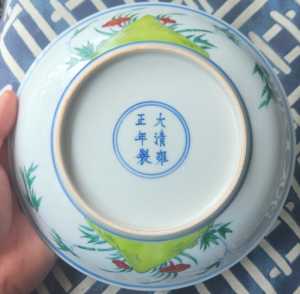
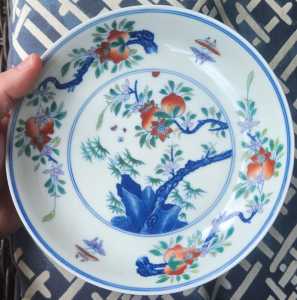
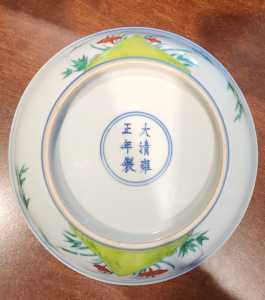
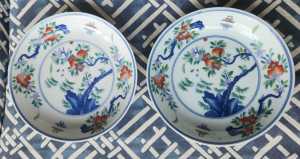
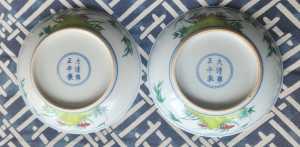
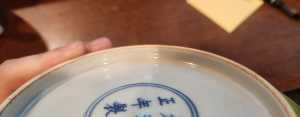
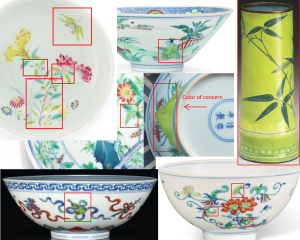
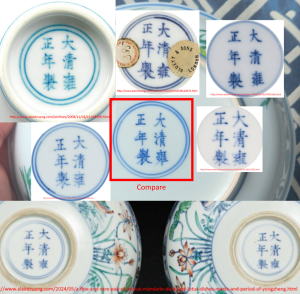
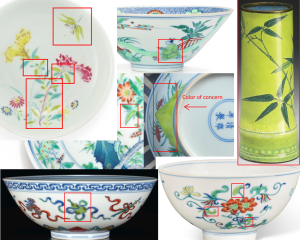
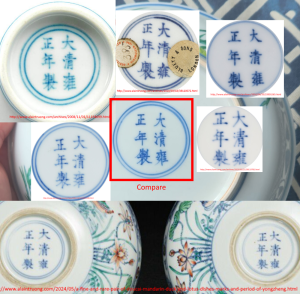
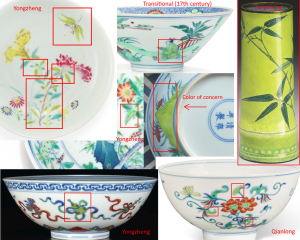



 ?ssl=1" alt="ReignMarkCompare" width="297" height="291" data-bit="iit" />
?ssl=1" alt="ReignMarkCompare" width="297" height="291" data-bit="iit" />